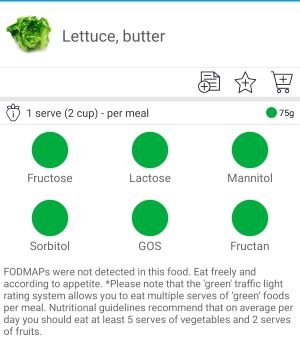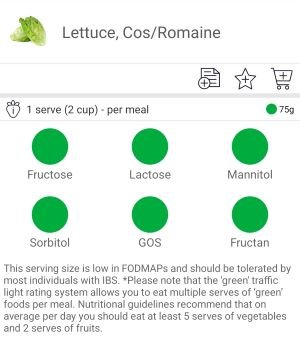10 Vegetables to Plant in your Low Fodmap Garden
/Nothing beats freshly grown vegetables, especially when they are from your own garden. If you have Irritable Bowel Syndrome (IBS) and are embarking on the elimination phase of the low fodmap diet, you may feel a bit hesitant to put time into a garden this year. Fear not, as being on the low fodmap diet doesn’t mean that you need to skip out on growing your own veggies, it just means that you may need to choose your seeds (or seedlings) wisely before you sow them. Unless that is, you don’t want to eat anything you grow…but what’s the fun in that?
This season you can grow and eat all that you produce, while at the same time working through your low fodmap elimination phase. This way so that you can be on your way to resolving your digestive woes and enjoy the your delicious garden bounty.
If you have IBS and are curious about the Low Fodmap Diet, learn more here with my article What the Fodmap is a Fodmap?
Here are my top 10 veggies to plant in your low fodmap garden…
Potatoes
Potatoes are on the top of my list for a low fodmap garden, particularly for those just starting out. Potatoes are incredibly easy to grow, low maintenance, and they are free from fodmaps, meaning that your portion size doesn’t need to be limited during a meal.
Potatoes are also a very versatile food which means you are less likely to get bored of them and it won’t feel like a chore to use them up. Enjoy them mashed, baked, made into hash browns, roasted with olive oil and herbs, added to soup, or used in casseroles (just to name a few ideas).
Lastly, potatoes store well, so if you get a decently sized crop, you can store them for about 2-3 months in a dark and cool location (at about 10 degrees Celsius).
So, give growing potatoes a try. Or if you are a seasoned potato grower, experiment with new varieties of potatoes to keep your garden interesting this year.
Just a sidenote – the above is referring to potatoes, not sweet potatoes, which are higher in fodmaps.
Green Onions/Spring Onions/Scallions
While onions are a no-no on the low fodmap diet due to their very high fodmap content, green onions (and more specifically the green part of the green onions) are low in fodmaps. This means that you can still get the onion flavour that so many recipes require, but without using an actual onion.
The bonus of growing green onions versus regular bulb onions is that you can harvest the green leafy part while keeping the rest still in the ground, then the green low fodmap part will regrow. Similarly, you can also buy green onions from the store, use the green parts, then pop the bottom parts in a cup of water and the top will regrow.
If you do decide to harvest the whole plant and want to save some for later, you can chop and freeze green onions. To do this, place cleaned and chopped green onions (the green part) on a baking tray. Place in freezer for 30 minutes. Remove and portion in a container of your choice.
Carrots
Carrots are another great, low fodmap crop to consider for your garden. If you’ve ever had fresh from the garden carrots, then you know what a sweet and flavourful treat they really are. Like potatoes, carrots also do not contain any fodmaps so they are a ‘free’ veggie, meaning that you don’t have to limit your servings per meal.
Great eaten raw, lightly steamed, roasted or added to salads or soups, carrots are a great edition to your veggie garden (and they store well in cool conditions, too!).
Lettuce
Lettuce is in many a gardener’s veggie patch, and for good reason. It is very easy to cultivate and grows relatively quickly compared to other vegetables. The beautiful thing about the speed at which it grows is, that if you plan it correctly, you can have multiple harvests each growing season. The bonus? Like some of the other vegetables mentioned here, depending on the variety of lettuce it is free or very low in fodmaps (see below). Just be careful not to overdo the amount of raw veggies you consume, as some people find large portions of raw vegetables to aggravate their IBS.
If you plant lettuce this year, try planting a bunch of different of types. There’s lots of great lettuce varieties out there and planting multiple different ones can ensure that you keep your salads interesting.
Don’t have lots of space to grow veggies? Well, lettuce is another veg that you can successfully grow in containers on balconies or patios.
Fresh Herbs
Fresh herbs, like parsley, basil, cilantro (coriander), dill and rosemary, are great editions to any home garden. If you are embarking on the first phase of the low fodmap diet (the elimination phase), you may feel at a loss on how to flavour your food…especially without garlic and onion! Herbs, particularly fresh herbs, are your answer to delicious, low fodmap flavour!
The great thing about growing herbs is that you don’t need a huge garden to do so. Herbs can be grown in the ground or in small pots on a balcony (or even in a sunny kitchen window). And because they are so flavourful, you don’t need to add a lot to your food to enjoy them. This means that even if your garden space is limited you can benefit from growing fresh herbs.
Kale
Kale is an easy, and often prolific, leafy green that could have a place in your low fodmap garden. A member of the cruciferous family, kale is packed full of nutrients which is why you may have seen it hyped as a “superfood”. Superfood status aside, kale really is a great veg to have at your disposal. It’s tasty sauteed with a bit of olive oil, slice finely and added to salads, or as an edition to soups or casserole-type dishes. It is also a cold hardy vegetable so it can tolerate colder or shorter growing seasons, if needed.
Like some of the above vegetables mentioned, kale can also be grown in containers if your space is limited.
Arugula
Another fantastic low fodmap vegetable to consider for your garden beds or container garden is arugula. This leafy green provides a unique, peppery flavour that is great on salads, in pastas, sandwiches and on low fodmap pizzas. Arugula can also be made into a delicious pesto.
Arugula is another vegetable that contains no fodmaps, meaning that there are no limits on serving sizes. For this reason, it’s an excellent choice for a low fodmap garden.
Green beans
Green beans are a great vegetable to grow in your low fodmap garden. If you’ve ever grown green beans, you’ll likely know the small joy of walking through the garden and grabbing a fresh bean for a snack as you pass…or maybe that’s just me?
According to Monash University, a low fodmap serving of green beans is 15 beans. Like most fodmap containing vegetables, you do need to be mindful of your portion size but at 15 beans, you shouldn’t feel unsatisfied (and if you do, you can always have more at another meal!).
If your garden space is limited, try growing bush beans in a container (instead of pole beans that require a lattice to grow up).
If you end up with a bumper crop of beans this season, they store well in the freezer so you can enjoy them for months to come.
Swiss Chard/Silverbeet
Swiss chard, or silverbeet as it is also know, is another low fodmap, leafy green that does incredibly well in backyard gardens or in small containers. If you want a little splash of colour in your garden, try the rainbow chard variety as you’ll love the colourful pop the stems give your vegetable patch.
Only trace amounts of fodmaps were detected in Swiss chard, so this is yet another vegetable that you can eat freely. Enjoy Swiss chard as a lightly sauteed side dish alone or with your other favourite veggies, in frittatas or egg dishes, or use the younger, more tender leaves in a salad.
Tomatoes
There may be nothing more satisfying that eating a fresh tomato…especially your homegrown tomato. Homegrown tomatoes taste so...tomatoey. That sounds weird to say but the flavour of your own, vine-ripened tomatoes is so much more intense than what you buy in the grocery store. While tomatoes do contain fodmaps, and you must watch your portion sizes, they are still worth growing (in my opinion) as the flavour is so much better.
Different types of tomatoes have different fodmaps servings:
Cherry tomatoes – 3 cherry tomatoes (45 g) are low fodmap.
Roma tomato – one small Roma tomato (0.75 g) is low fodmap
Common tomato and On the Vine – half a tomato (65-69 g) is low fodmap
While the portions may not seem like a lot, a few slices of a beautifully flavoured tomato on a sandwich, in a salad or accompanying some scrambled eggs is totally worth it. If you are going to have some tomato, why not make it a delicious, homegrown one?
Are you growing your own low fodmap garden this year? Let me know your top, low fodmap veggies to plant below in the comments section!
All fodmap content information is current as of July 2022. Info obtained from the Monash Fodmap App. As Monash often retests foods occasionally, some serving sizes may change. If you note a change that I have not updated, feel free to let me know.




















